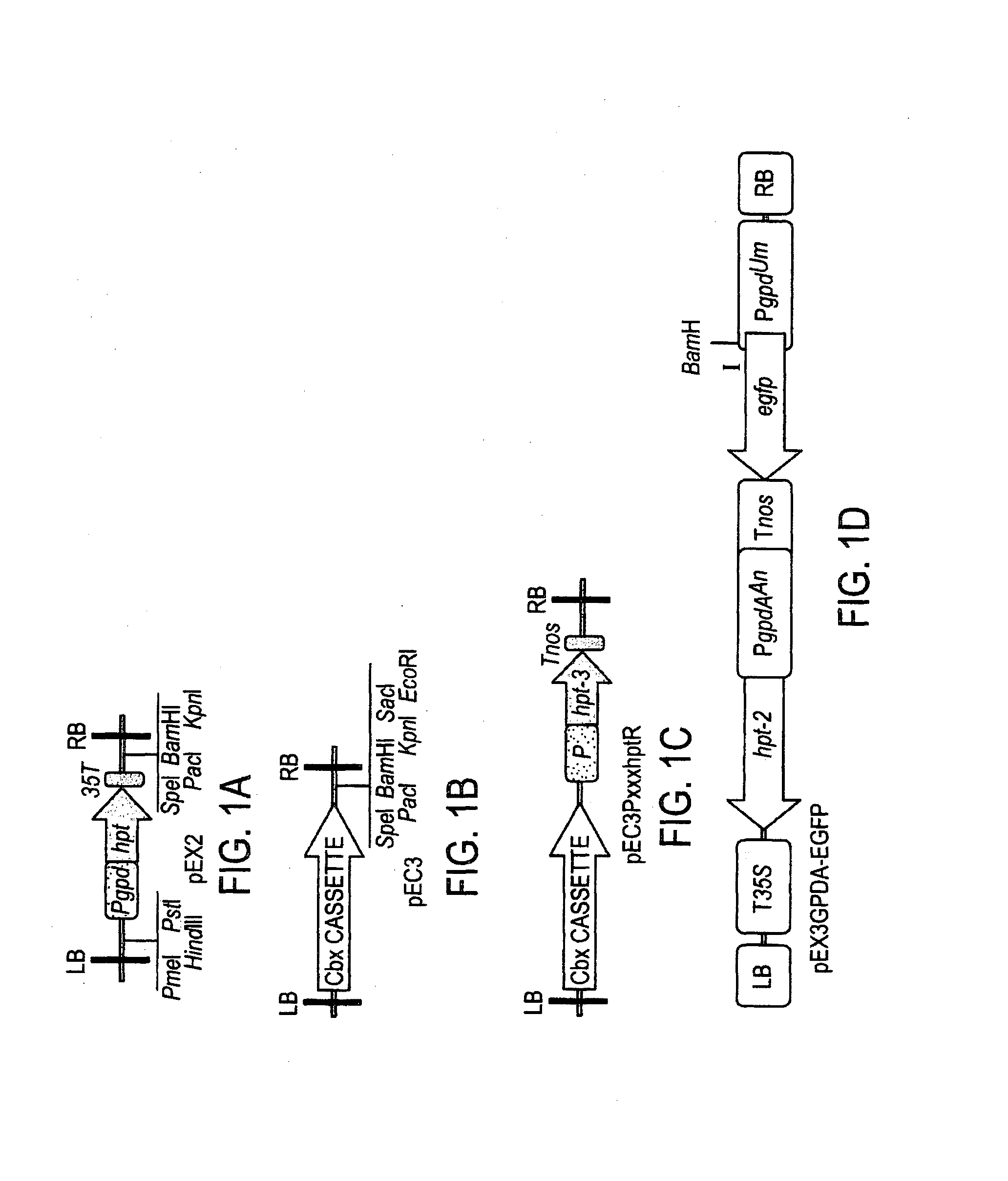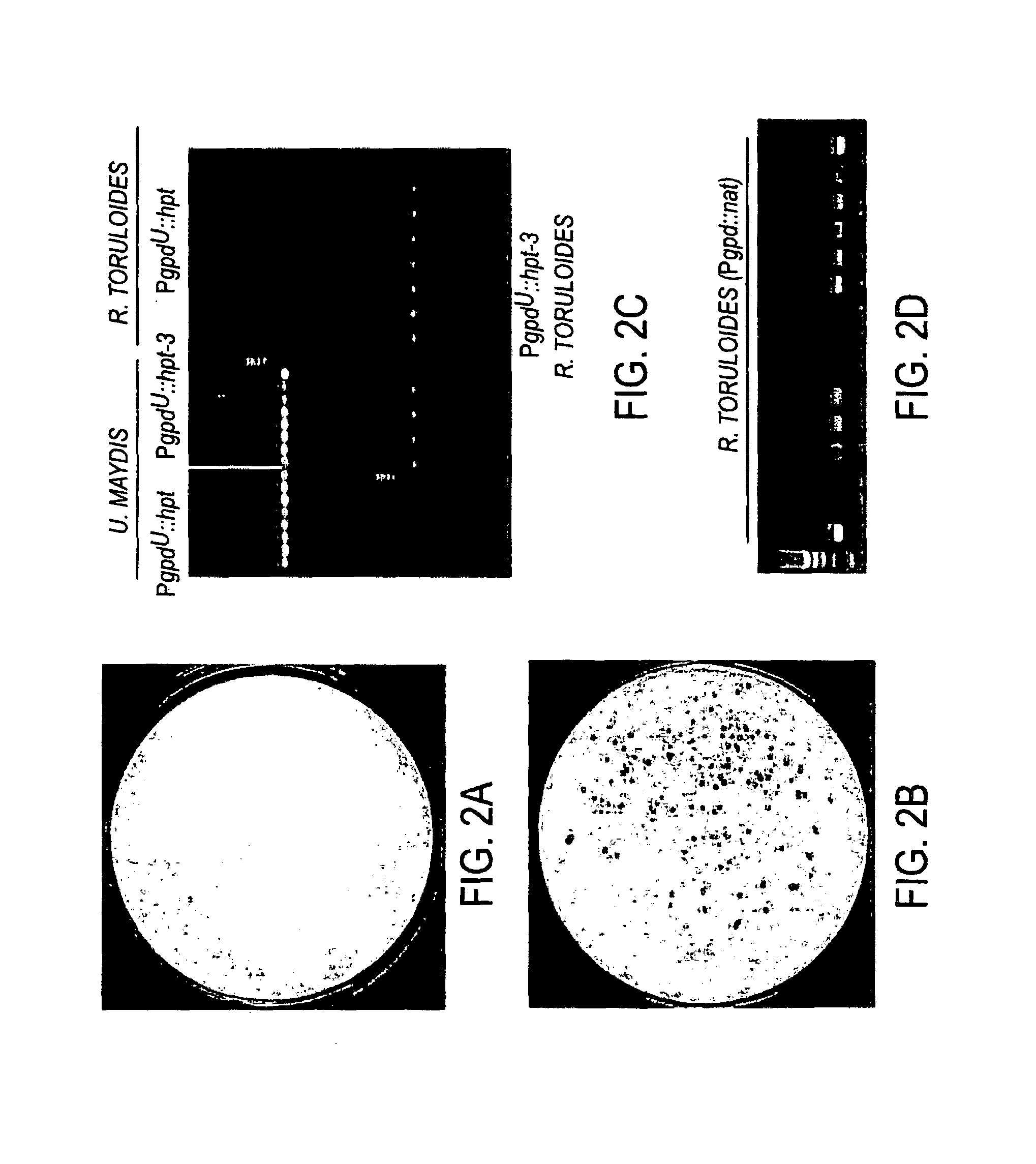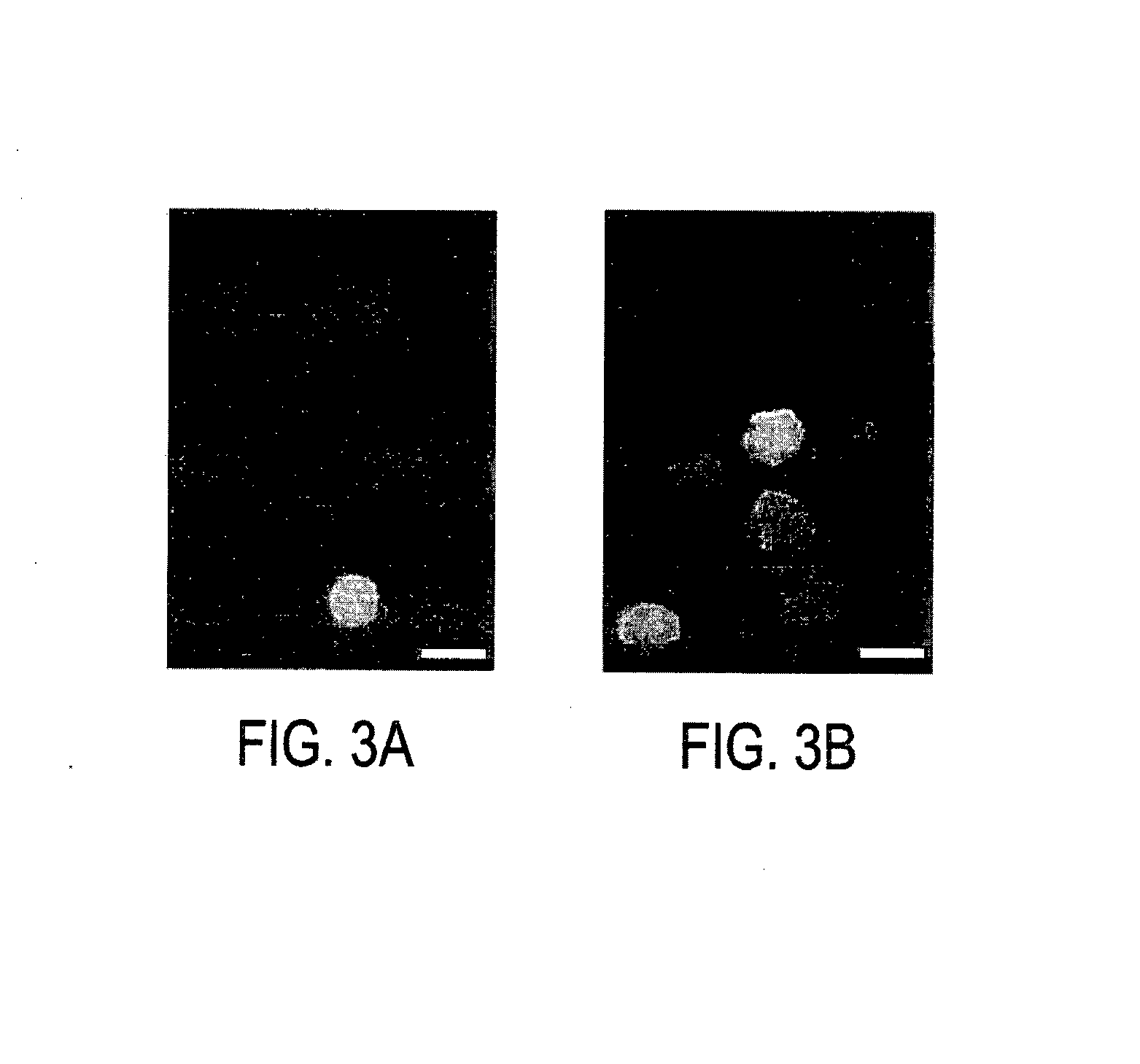Genetic manipulation and expression systems for pucciniomycotina and ustilaginomycotina subphyla
a technology of pucciniomycotina and ustilaginomycotina, applied in the field of plant molecular biology, can solve the problems of affecting the production of cells, unable to use functional promoters, and high reliability of methods, and achieves the effect of strong gene expression and facilitating the production of cells
- Summary
- Abstract
- Description
- Claims
- Application Information
AI Technical Summary
Benefits of technology
Problems solved by technology
Method used
Image
Examples
example 1
Culture of Microbial Strains and Basic Molecular Methods
[0061]R. toruloides strain ATCC10657, ATCC10788 and R. glutinis strain ATCC90781 were sourced from the American Type Culture Collections (ATCC). Ustilago maydis strain and Agrobacterium tumefaciens strain AGL-1 have been described (Ji et al., 2010; Lazo et al., 1991). Sporisorium scitamineum haploid S10 is a haploid strain originated from China. Escherichia coli strain XL1-Blue was used for routine plasmid manipulation and amplification. Rhodosporidium and U. maydis were cultured at 28° C. in YPD broth (1% yeast extract, 2% peptone, 2% glucose) or on solid potato-dextrose agar (PDA). A. tumefaciens was cultured at 28° C. in either liquid or solid 2YT medium (1.6% tryptone, 1% yeast extract, 0.5% NaCl). E. coli was grown in LB broth or on solid LB agar. For lipid production, R. toruloides was cultured in liquid accumulation medium as described previously (Wu et al., 2010a) at 30° C. with constant shaking (200 rpm). Antibiotics H...
example 2
DNA Constructs
[0064]Oligonucleotides used are SEQ ID NOs:11-47. Oligos LoxP1 (SEQ ID NO:11) and LoxP2 (SEQ ID NO:12) were annealed and ligated with EcoR1 / XbaI double digested pPZP200 (Hajdukiewicz et al., 1994) to create pEX0, which contains two Cre recombinase recognition sites (loxP) flanking two unique restriction sites, EcoRV and XhoI. The NcoI site between the gpd promoter and hpt coding sequence in pGH1 (Ji et al., 2010) was abolished by changing to the fourth nucleotide of hpt gene from G to A by oligo-mediated mutagenesis to create pGH4, from which the 1854 bp SpeI-SphI fragment was blunt-ended with T4 DNA polymerase and inserted into the EcoRV site of pEX0 to create pEX1. The whole Pgpd::hpt::T35S cassette from pEX1 was amplified by PCR using oligos RB-S (SEQ ID NO:13) and 35TLU2 (SEQ ID NO:14), digested with PstI, and inserted between the XbaI and PstI site of pPZP200 to create pEX2.
[0065]Promoters of the glyceraldehyde phosphate dehydrogenase A (gpdA) and translation elon...
example 3
Transformation of R. toruloides Via Electroporation
[0067]Protoplasts of R. toruloides were prepared according to the method described previously (Heiser, 2000; Kuo et al., 2004) with some modifications. Briefly, fungal cells were digested with lyzing enzymes from Trichoderma harzianum (Sigma) and washed with Hepes buffer (1 mM Hepes, 0.6 mannitol, pH7.5). Protoplasts (1×108) were mixed with plasmid DNA (5 μg), chilled on ice for 10 min, and subjected to electroporation in a BIO-RAD GENE PULSER® II equipped with Controller Plus and Capacitance Extender Plus. A series of parameters were tested using pEC3PgpdU-hpt3 with field strength varied from 1.25 kV / cm to 2.5 kV / cm; capacitor from 10 μF to 50 μF, and resistance from 100Ω to 600Ω. No true transformants were been obtained in several attempts.
PUM
| Property | Measurement | Unit |
|---|---|---|
| Fraction | aaaaa | aaaaa |
| Fraction | aaaaa | aaaaa |
| Fraction | aaaaa | aaaaa |
Abstract
Description
Claims
Application Information
 Login to View More
Login to View More - R&D
- Intellectual Property
- Life Sciences
- Materials
- Tech Scout
- Unparalleled Data Quality
- Higher Quality Content
- 60% Fewer Hallucinations
Browse by: Latest US Patents, China's latest patents, Technical Efficacy Thesaurus, Application Domain, Technology Topic, Popular Technical Reports.
© 2025 PatSnap. All rights reserved.Legal|Privacy policy|Modern Slavery Act Transparency Statement|Sitemap|About US| Contact US: help@patsnap.com



